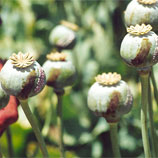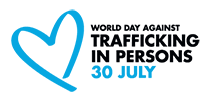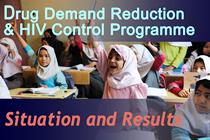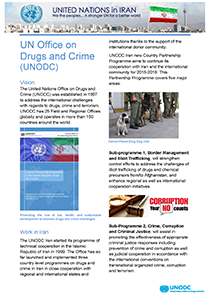Afghan opium crop cultivation rises seven per cent in 2014; while opium production could climb by as much as 17 per cent.
 12 November 2014 - Opium poppy cultivation in Afghanistan rose seven per cent from 209,000 hectares in 2013 to 224,000 hectares, according to the
2014 Afghanistan Opium Survey released today in Vienna and Kabul by the Afghan Ministry of Counter Narcotics and the United Nations Office on Drugs and Crime (UNODC). Meanwhile, opium production may potentially increase 17 per cent, with yields estimated to reach 6,400 tons in 2014 compared to the previous year's total of 5,500 tons.
12 November 2014 - Opium poppy cultivation in Afghanistan rose seven per cent from 209,000 hectares in 2013 to 224,000 hectares, according to the
2014 Afghanistan Opium Survey released today in Vienna and Kabul by the Afghan Ministry of Counter Narcotics and the United Nations Office on Drugs and Crime (UNODC). Meanwhile, opium production may potentially increase 17 per cent, with yields estimated to reach 6,400 tons in 2014 compared to the previous year's total of 5,500 tons.
The Executive Director of UNODC, Yury Fedotov, said that Afghanistan's narcotics problem remained a global challenge and shared responsibility "We cannot afford to see the long-term stability of Afghanistan - and the wider region - derailed by the threat of opiates. What is needed is greater resolve towards addressing narcotics in a serious and tangible manner within the economic, development and security agendas." Afghanistan produces some 90 per cent of the world's illicit opiates. These increases come after record highs were noted in 2013, when cultivation rose 36 per cent and production by almost a half since 2012. Average opium yield amounted to 28.7 kilograms per hectare in 2014, 9 per cent up from 2013 when it stood at 26.3 kilograms per hectare. The number of poppy-free provinces remained at 15 with Balkh regaining that status, while Sari Pul lapsed back into production. The link between insecurity and opium cultivation observed in the country since 2007 continued to be a factor in 2014; the bulk of opium poppy cultivation - 89 per cent - was concentrated in nine provinces in the southern and western regions, which include the most insecure provinces in the country. Hilmand province, registering a three per cent increase in cultivation, remained Afghanistan's leading crop grower (taking 46 per cent of the national total), followed by Kandahar, Farah, and Nangarhar. The southern region continued to take the lion's share of national opium production with 69 per cent recorded in 2014. The country's second most important opium-crop producing region was in the west, taking 16 per cent of national production. Worth around US$ 0.85 billion, or roughly four per cent of the country's estimated GDP, the farm-gate value of opium decreased 13 per cent in 2014. That decline was driven by a 23 per cent fall in prices in all regions of Afghanistan to US$133 per kg, probably as a result of greater crop production and supply. Across the country, governor-led eradication decreased by 63 per cent to 2,692 hectares in 2014 from 7,348 in 2013. The number of casualties during the 2014 eradication campaign fell significantly in 2014; 13 lives was lost, compared with 143 fatalities in 2013. |
|



